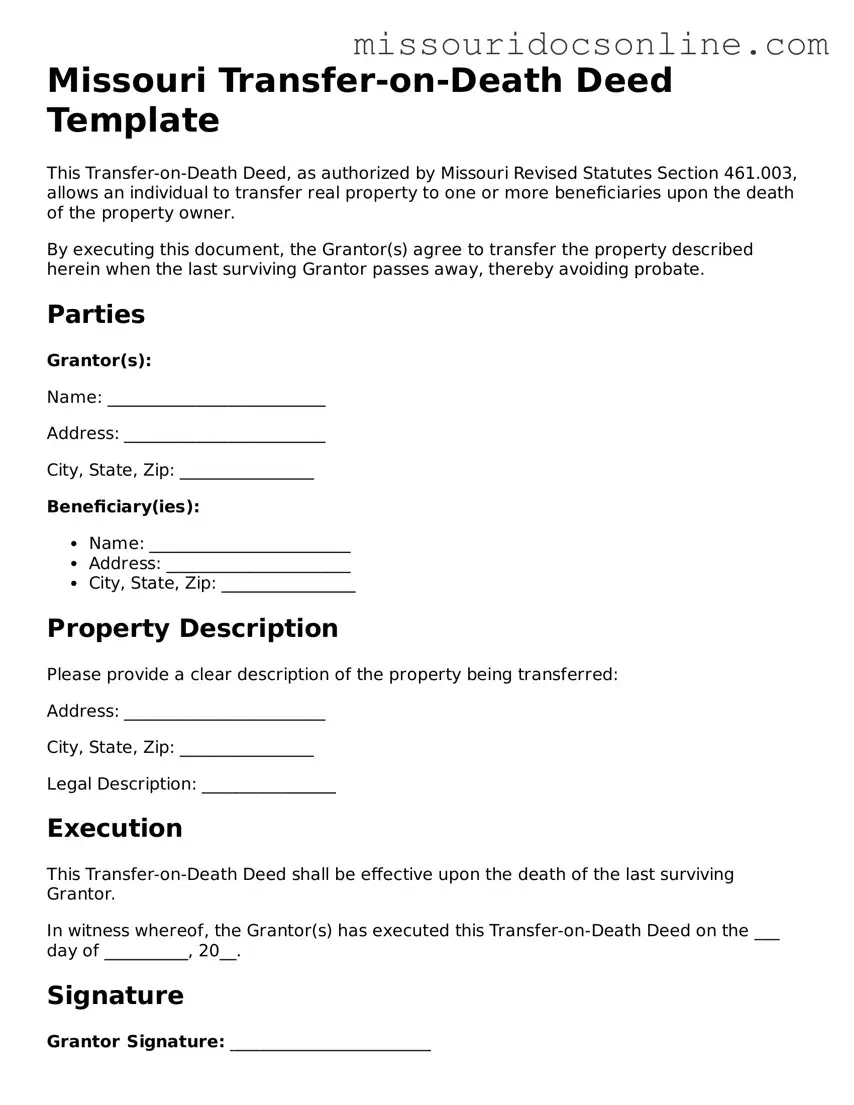Attorney-Approved Transfer-on-Death Deed Form for Missouri State
The Missouri Transfer-on-Death Deed form allows property owners to transfer real estate to beneficiaries upon their death, bypassing the probate process. This legal tool provides a straightforward way to ensure that your property goes to your chosen heirs without unnecessary delays or costs. To get started, fill out the form by clicking the button below.
Access Transfer-on-Death Deed Editor
